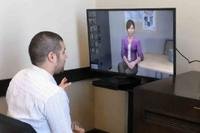A quick look at the current job market provides a sobering picture to anyone looking for work.
Unemployment rates are high, underemployment is a common problem, and student loans are piling up higher than ever as millennials turn to school to gain a competitive edge.
All of this information may paint a dire picture for veterans returning from active duty, especially those being discharged as part of the drawdown of U.S. operations in the Middle East.
However, the good news is that there are certain industries experiencing a shortage of skilled workers, which means jobs in untapped sectors are plentiful. One of them is manufacturing.
Fortunately for veterans, the Get Skills to Work Initiative is dedicated to connecting employers involved in the manufacturing industry with veterans in need of jobs. To find out more, Military.com spoke with Kris Urbauer, program manager of Veterans Initiatives at General Electric; AJ Jorgenson, the communications director for the Manufacturing Institute; and Lauren Jenkins, the account manager of ScoutComms USA.
Q.: How did the Get Skills to Work Initiative get started?
Kris: "It was basically about trying to solve two problems at once. There are skill gaps in manufacturing where manufacturers cannot find employees they need with the proper skills. That seems to be a nationwide problem.
"Paired with that, we have an opportunity: The military is in its downsizing phase and will be over the next 4-5 years. There will be a number of service members getting out of each branch of service. You've got these veterans with a great foundation of skills of being able to work in teams, solve problems, work fast, be flexible and come to work on time in the right uniform.
"It's a great assortment of good worker skills. Pairing that with the need for skilled labor and manufacturing, we have an opportunity to fill the need with veterans. That's how the idea for Get Skills to Work got started."
Q.: Who's involved, and how do they approach veterans to fill the gap?
Kris: "The main companies in the coalition are General Electric (GE), Bowing, Alcoa and Lockheed Martin. They were the ones that started the coalition from the employer side. Then, obviously, we're also partnering with the Manufacturing Institute along with Futures, which supplies some of the technical background parts of the matching process, and IVMF [the Institute for Veterans and Military Families] for their expertise with veterans. We're also working with the Gary Sinise Foundation, who is very active in the veteran space in helping veterans and their families."
AJ: "I believe we now have over 475 companies in the coalition. The ones just mentioned are what we consider the founding partners, and with them, we've continued to grow with the number of manufacturers involved."
Q.: What are the goals of the initiative?
AJ: "The goal is to assist 100,000 veterans by 2015. This year, we are close to reaching 30,000 through Get Skills to Work programming. Of the 3,000 employers who have used the toolkit, the coalition has collectively hired over 4,500 veterans. More than 12,000 have discovered matches through LinkedIn, and more than 5,000 veterans have been trained."
Q.: Are you focusing more on approaching employers or veterans?
Kris: "You have to go from both sides. It's a supply and demand equation. The Manufacturing Institute has the advantage on the employer's side with gathering more employers to join the coalition. We obviously need the supply of veterans.
"We're trying to get the word out anyway we can through the services themselves. I actually had a meeting with Sgt. Maj. [Bryan] Battaglia this morning at the Pentagon in D.C.
"He's one of our biggest supporters in assisting with getting the word out and getting Get Skills to Work mentioned in the proper publications so that veterans know to go to our website if they're interested at all in manufacturing or want to explore it. We've got to attack the problem on both sides."
Lauren: "The Institute for Veterans and Military Families, IVMF, as part of Get Skills to Work, created an unemployment toolkit. It guides employers on ways that they can better train, recruit and retain veterans. So it's not only about hiring, but how to create programs within a company that make the transition for veterans a little bit easier."
Kris: "One big thing we did in Illinois was involve technical and community colleges."
Q.: What's the impact of Illinois joining the initiative?
AJ: "Illinois was the first state to join because it brought in the employers, the manufacturers, the schools, as well as Gov. [Pat] Quinn, who we consider to be part of the public. We think of that as three sides of the triangle. What it allows us to do, by creating collaboration, is expand the work in an organic setting.
"What we're hoping to do with that is replicate it throughout the other 49 states. So no matter where you enter, be it social media or your local school or manufacturer, you'll always end up at the same point, which would be Get Skills to Work."
Q.: Are there any plans to expand the purview of the coalition?
Kris: "Manufacturing is the scope for now. I don't anticipate it growing beyond that anytime soon, especially since there's a huge gap there, and that's a natural fit for a lot of the [military occupational specialties] coming out of the military.”
Q.: How can veterans reach out to Get Skills to Work?
Kris: "By visiting www.getskillstowork.org. It pretty much has all the information to get folks started: information on schools, information on the U.S. manufacturing pipeline, matching data banks that have skills matched to the MOS's coming to us from the military. They can match directly with employers and link to that database from the website. We're trying to make it one-stop shopping.
"To be clear, there are certain MOS's that already have manufacturing skills to be matched directly with employers so they can go right to work in manufacturing through the U.S. manufacturing pipeline.
"Secondly, community colleges and technical schools can train individuals in manufacturing skills in the local area where those skills are needed. If they enroll in the Get Skills to Work manufacturing training at certain schools, it could be basic, welding, machining or any number of different skills that the manufacturing employer-base is looking for.
"We really want the training to be as precise and efficient as possible so they can go out and be employed without a four-year degree or anything extra lengthy. The key thing to remember is that the schools involved have the courses funded by the GI bill."
Q.: If you had one piece of advice to give to transitioning veterans, what would it be?
Kris: "To any veteran leaving the service, take a look at manufacturing as a career. I don't know if vets think of it as a natural fit and/or something that's cool and exciting, because they think about old-school assembly lines with "put a screw in" manufacturing.
"It's so much more high-tech and interesting and exciting and skilled. I think they may actually enjoy it. But, obviously, follow your passion and do whatever really interests you."
AJ: "I would echo that. We say that today's manufacturing is not your grandfather's manufacturing."
Want to Know More About the Military?
Be sure to get the latest news about the U.S. military, as well as critical info about how to join and all the benefits of service. Subscribe to Military.com and receive customized updates delivered straight to your inbox.











